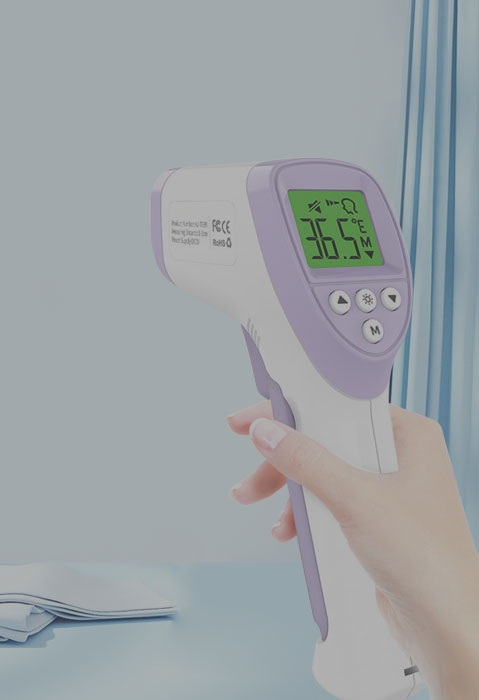Key features and considerations for infrared thermometers
2023-11-22
An infrared thermometer, also known as a non-contact thermometer or laser thermometer, is a device that measures temperature from a distance without making physical contact with the object or surface being measured. It uses infrared technology to detect and measure the thermal radiation emitted by an object. Here are some key features and considerations for infrared thermometers:
1. Non-Contact Measurement: One of the main advantages of infrared thermometers is their ability to measure temperature without direct contact with the object. This makes them useful for measuring the temperature of moving objects, hazardous substances, or situations where contact is impractical.
2. Infrared Technology: Infrared thermometers work by detecting the infrared radiation emitted by an object. The device converts the detected radiation into an electrical signal, and then the temperature is calculated based on this signal.
3. Accuracy: The accuracy of an infrared thermometer depends on various factors, including the emissivity of the material being measured. Some infrared thermometers allow you to adjust the emissivity settings to improve accuracy for different surfaces.
4. Temperature Range: Infrared thermometers are suitable for measuring a wide range of temperatures, from below freezing to high temperatures. The specific temperature range may vary depending on the model.
5. LCD Display: Most infrared thermometers have a digital LCD display that shows the measured temperature. Some models also feature additional information, such as minimum and maximum temperature readings.
6. Response Time: Infrared thermometers typically provide quick temperature readings, with many models offering response times within a few seconds.
7. Applications: Infrared thermometers find applications in various fields, including industrial processes, food safety, HVAC (heating, ventilation, and air conditioning) maintenance, medical settings, and home use.
8. Battery Powered: Infrared thermometers are often powered by batteries, making them portable and convenient for use in different locations.
When using an infrared thermometer:
- Check Distance and Spot Size: Follow the manufacturer's guidelines regarding the optimal distance and spot size for accurate temperature measurement.
- Avoid Obstructions: Ensure that there are no obstructions or reflective surfaces between the thermometer and the object being measured, as these can affect accuracy.
- Understand Emissivity: Some materials have different emissivity levels. Adjust the emissivity setting on the thermometer when necessary to improve accuracy.
Popular brands offering infrared thermometers include Fluke, Etekcity, Braun, and ThermoPro, among others. When choosing an infrared thermometer, consider the specific requirements of your application and the temperature range you need to measure.



